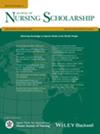An examination of retracted articles in nursing literature
Abstract
Introduction
The output of scholarly publications in scientific literature has increased exponentially in recent years. This increase in literature has been accompanied by an increase in retractions. Although some of these may be attributed to publishing errors, many are the result of unsavory research practices. The purposes of this study were to identify the number of retracted articles in nursing and reasons for the retractions, analyze the retraction notices, and determine the length of time for an article in nursing to be retracted.
Design
This was an exploratory study.
Methods
A search of PubMed/MEDLINE, the Cumulative Index to Nursing and Allied Health Literature, and Retraction Watch databases was conducted to identify retracted articles in nursing and their retraction notices.
Results
Between 1997 and 2022, 123 articles published in the nursing literature were retracted. Ten different reasons for retraction were used to categorize these articles with one-third of the retractions (n = 37, 30.1%) not specifying a reason. Sixty-eight percent (n = 77) were retracted because of an actual or a potential ethical concern: duplicate publication, data issues, plagiarism, authorship issues, and copyright.
Conclusion
Nurses rely on nursing-specific scholarly literature as evidence for clinical decisions. The findings demonstrated that retractions are increasing within published nursing literature. In addition, it was evident that retraction notices do not prevent previously published work from being cited. This study addressed a gap in knowledge about article retractions specific to nursing.

 求助内容:
求助内容: 应助结果提醒方式:
应助结果提醒方式:


